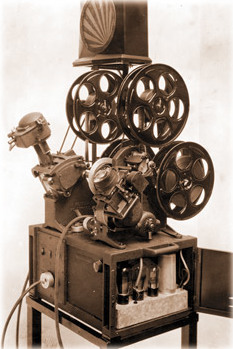TBS - Tech behind Visual Storytelling
TBSThis post is the second installment of a series - Tech behind Storytelling. The prologue can be found here
“I think cinema, movies, and magic have always been closely associated. The very earliest people who made film were magicians.” - Francis Ford Coppolla
And magic it is! Of all the various forms of storytelling, there is a certain sense of wonder and excitement that only good cinema can bring. Movies are pretty commonplace now. We consume some form of visual content almost on a daily basis. But from our established storytelling timeline view, the series of events that led to this, all happened in a very short period of time - in as little as 150 years.
The earliest films were not really telling a story. They just captured a single event such as a train arriving at a railway station or people walking in a garden. But even these seemingly ordinary scenes were magical because, no one has seen anything like it ever before - a medium through which events have been immortalised forever and can be replayed at whim. The secret? An explosion in technological advancements in a variety of fields - from optics to astronomy to acoustics and many more.
Just like paper was not invented specifically to write stories, most of this tech was created to achieve various other goals. But a few pioneers saw how this could be used to advance storytelling to new dimensions. The late 19th century saw the arrival of tech that can be used to exhibit these films to the general public, and by the beginning of the 20th century, cinema theatres came into existence.

The most important piece of tech that made it possible is the Camera itself. The evolution of the camera to a form that allowed the user to capture a moving sequence is a long and interesting journey that spans centuries. The cameras of the late 19th - early 20th century, required a film - a technology popularised by George Eastman, founder of Eastman Kodak - on which the image is captured. A series of such captured images are then played back at a particular rate to give the illusion of movement in these pictures.
Storytelling via film started taking shape in these years. With it, the need for specialized devices and systems arose. Sequences of film shot at different times, were cut and spliced together to create longer films that tell stories that spanned days. The Moviola was created for this purpose. This allowed the user to view the film as it was being cut.

The Cinema Projector was the final piece of tech required to complete the experience. Once the film has been shot and edited, it was exhibited to the masses at theatres, using the projector. There was also the problem of copying the film, so that it can be sent to multiple locations. Processes like Contact Printing - wherein light is passed through unexposed film that is placed in contact with the original film - were used to achieve the result.
But an important piece of the puzzle was still missing from this magical experience, when compared to movies of today - Sound. This was the era of the Silent film. It is difficult to imagine a silent film today, but the people didn’t complain then. The marvel of the cinema experience was still strong enough. There were two workarounds to the absence of sound - Intertitles and a live orchestra.
Title cards - Relevant text written on cards, then photographed and inserted at the correct intervals - were used to convey dialogue, emotions and credits. But what was more interesting was the orchestra itself. The team sat close to the screen and played the complete score of the film while perfectly matching it to the action on screen. This also included singers and narrators at times as well.
But soon technology caught up and successful sound synchronization was possible. The artists were able to record the score and dialogues once and play it along with the movie using sound systems. By the 1930s, talkies” were the new sensation. Further improvements to these technologies continued over the years, but the overall process of making and showcasing cinema remained the same until the late 1950s.
These 50 years - 1950s to 2000s - brought in a wave of new changes and advancements that led to the development of cinema as we know it today. Three important events were the primary catalysts for this change - The rise of the Television, The Digital Revolution and The advent of the Personal Computer.
Up until the 1950s, the advancements in tech were because of some brilliant machines and physical systems. The changes in the 70 years since then, are of a different kind. What makes it more exciting is that it all happened in such a short span and the role computer science played in it.
Over these past 30 years, the advancements in the world of computer technology and the widespread use of computers has improved the overall film-making process and also created new avenues for storytelling itself. In the upcoming posts of this series, I will look at what these changes are, how they contributed to Storytelling and how Star Wars is an important part of all this!
Subscribe to the Blog!
Want to get notified about the latest updates?
Subscribe Via RSS Subscribe Via Email